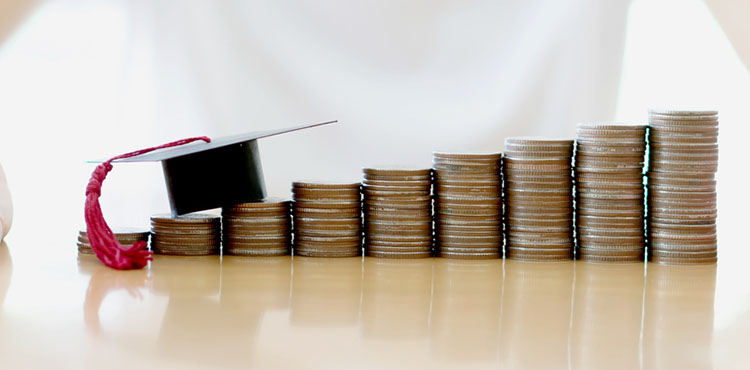Repaying nursing school loans can be a daunting task, especially if you have several loans carrying large balances. If you add in additional debt such as credit card debt and car loans, it gets even more complicated. Which loans should you pay off first? What’s the fastest way to become debt-free?
There are two popular methods for debt repayment – the debt snowball and the debt avalanche, and they both come with pros and cons.
Let’s say you have three outstanding debts – two student loans, plus a credit card. We’ll call them A, B, and C. With both the debt snowball and debt avalanche, you would:
- make the minimum payments on all three loans each month
- cut back and/or eliminate discretionary expenses (e.g. cable TV, eating out) so that you have extra money to pay towards your debt
- use any extra money in your budget to pay down your loans
For example, when you pay off loan A you would roll that payment into your payment for loan B until it’s paid off. Once loan B is paid off you would roll your payments for both A and B to pay off C. Eventually you will build a huge snowball or create an avalanche in loan repayments.
But the two methods differ in their approach in one key way: the order you repay your debts. Let’s take a look at examples of how each strategy works.
The debt snowball strategy was made popular by personal finance radio personality Dave Ramsey. With the snowball, you would list your debts from the smallest to largest balance and then pay them off in that order, one-by-one until all debts are paid.
For example, if loan A is $3,000, loan B is $5,000, and loan C is $12,000, you would pay them in that order, regardless of the interest rates. So even if loan C has a higher interest rate than loan A, you would still aggressively pay loan A until it’s paid off before focusing on loan C.
The theory of the snowball method is that by paying off the smallest loan first, you will gain momentum and experience success along the way. How awesome would it feel to pay off a student loan? With the snowball method you get to experience paying off the $3,000 loan much quicker than you would pay off the $12,000.
Many people have successfully paid off their loans using the debt snowball. But many others think the debt avalanche is the smarter way. Here’s how it works.
Let’s say you have those same three loans, but the one for $5,000 happens to have the highest interest rate. You would start your avalanche by paying the minimum payments on all three and then throwing any extra money at the $5,000 loan since it carries the highest interest rate.
The debt avalanche is all about the math. You could save thousands of dollars in interest payments using the debt avalanche. But again, you may have to wait quite a while before you experience any repayment victories.
Since personal finance is indeed personal, you should choose the method that you will stick with. If you choose to do a debt snowball you may end up paying higher interest, but if that’s the strategy that will keep you focused, it’s the best one for you.
Conversely, if you’re the type of person who is good at delayed gratification or you’re more motivated by saving money on interest, the debt avalanche would work best for you.
The key is to remember the importance of repaying your student loans and other consumer debts so that you’re free to make career and life decisions without being tied down by debt.
- Retirement Planning for Nurses - July 17, 2019
- How to Combat Nurse Burnout - April 9, 2019
- Are For-Profit Nursing Schools a Good Choice? - October 16, 2018



